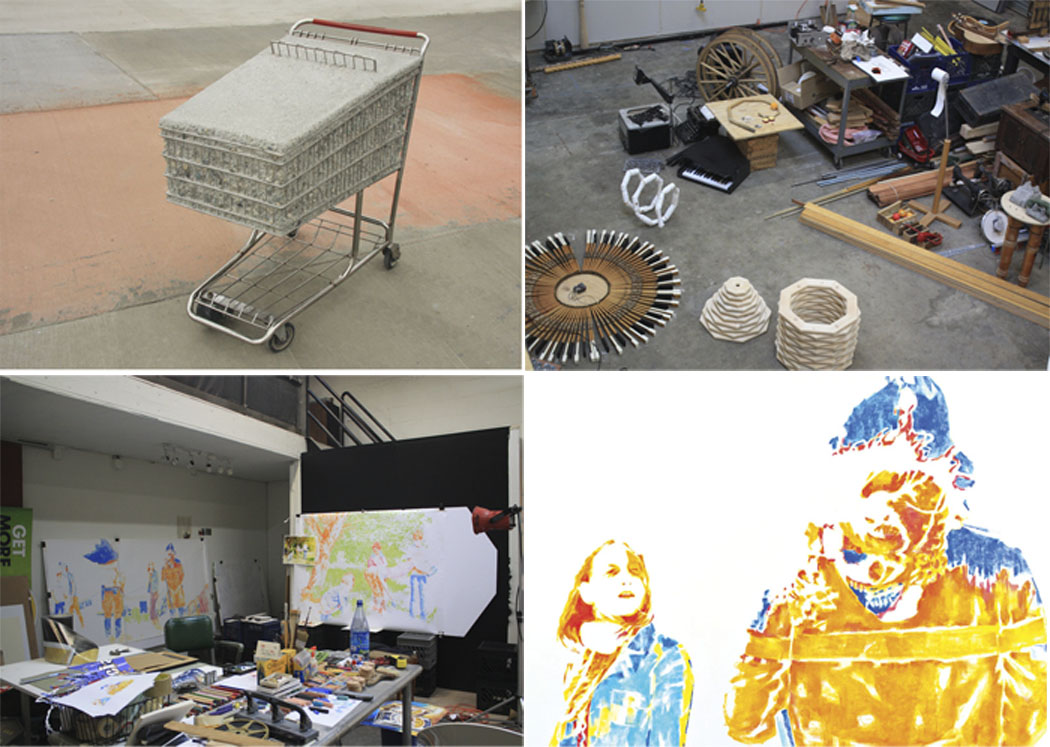Second Chances: San Francisco recycling center hosts sustainable art exhibit

Carli Baker/Staff
The exhibitions of artwork by Donna Anderson Kam, Terry Berlier and student artist Ethan Estess were a diverse range from the surreal (Estess’s mannequin with a backpack overflowing with coffee lid tentacles) to the delicately beautiful (Kam’s rainbow pastel drawings). Overall, the exhibitions were thought-provoking examinations on the environmental impact of waste from a microcosmic level.
While dialogue on green sustainability is nothing new — we all hear from scientists and news op-eds on how reckless human consumption ravages Earth’s ecosystems — what’s striking about the Recology SF art exhibit is its intimate approach to garbage. Formed by everyday knick-knacks, the art highlights the disposable nature of all that we own. The result is a rare feat of connecting individual actions to larger social responsibility without feeling forced — an aesthetic reminder that the mountains of trash in dumps are simply made of objects left by each and every one of us.
The hidden (or ignored) reality of material excess ties the ideals of Recology SF together. “All the artists that come through our program have different experiences, but there’s an underlying theme of surprise and overwhelming unbelief at the amount of materials that we buy and don’t use,” commented Deborah Munk, the director of the Artist in Residence Program. Munk then pointed out that napkins alongside the night’s refreshments were from unopened boxes dumped in 2003.
To look through the peephole in Terry Berlier’s piece “Event Horizon” is to understand the bizarre overload of disposed objects at places like Recology. With scavenged IKEA slats, Berlier constructed layers of wooden octagons that jut out of the wall, with a lamp swinging above. When one peers inside, a mirror reflects the viewer’s eye and the surrounding tunnel into infinite angles, with rings of light traveling across the continuum. The piece is a graceful expression of the surreal, endless excess Berlier witnessed during her residence.
“The first month or two you’re completely overwhelmed, seeing the amount of garbage we create as a society,” recounted Berlier. An assistant professor of sculpture at Stanford, Berlier connected her experience to theories like an event horizon (the point at which light can no longer escape a black hole): “I felt like I was the point of no return. The artists here (at Recology) are like the last moment of scavenging these materials.”
Evident from Berlier’s account, constant exposure to the dump alters an artist’s perspective on how society disposes materials. In “Homespun,” Berlier weaves wooden bedposts into a large chain that snakes in and out of the wall before spiraling across the floor. In effect, the junk left by our domestic lives is projected as an absurd buildup of trash over time.
But if Berlier appears pessimistic about the future of waste, her most interactive piece is uplifting: a circle of playable ivory keys (from an upright piano) wired to a Dell microcontroller and a Mac. Berlier titled the piece “The Beginning and the End Meet,” as it seemed poignant amongst the wasteland of ruined objects. “This whole place for me was about the end, where all these materials end up here,” related Berlier, “But it’s not the end — it has an impact.” With the right mindset, even discarded technology can meld into future designs.
While Recology’s assorted junk is a virtual playground for sculptors like Berlier, it’s a challenge for artists like Donna Anderson Kam. Kam usually creates large-scale pastel drawings, but basic materials like paper were hard to come by as tractors compact piles at the dump. However, she remained enthusiastic towards reusing what others consider garbage. “Everything comes to an end here, and it’s really wonderful to experience that and try to make something new and fresh from it,” said Kam.
Indeed, Kam experimented with collages of advertisements in her process. Typically, Kam photographs young actors performing scenes, then sketches the images. In one piece from Kam’s “Little Hollywood, CA” series, a large canvas portrays disaffected youth rendered with a stunning spectrum of colors, with wild grass cut from a Budweiser ad. The details seem both real and artificial, reflecting a cultural environment where rampant consumerism becomes as natural as fields and trees.
In the end, hope for the future of ecology came from young artists like Ethan Estess. A grad student of interdisciplinary environmental science at Stanford, Estess has a passion for bridging marine ecology and sculpture. “Science writing is structured to be devoid of emotion,” said Estess, “but you can’t make decisions without emotions. Every choice we make comes from our conscious.”
“Hopefully, with my artwork, I can foster that environmental consciousness,” he concluded. And by showcasing the secret life of things we throw away, artists like Estess do just that: They bring matters of conservation science closer to the heart.
















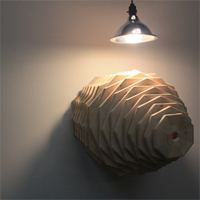
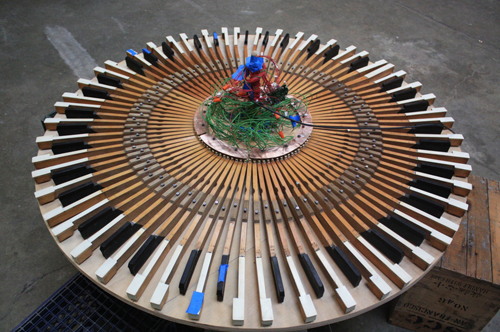 Terry Berlier
Terry Berlier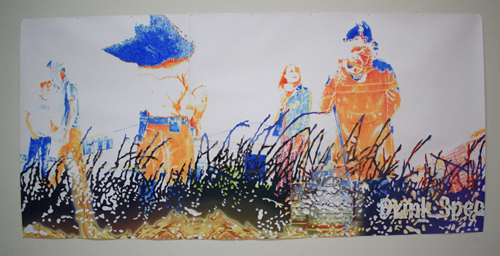 Donna Anderson Kam
Donna Anderson Kam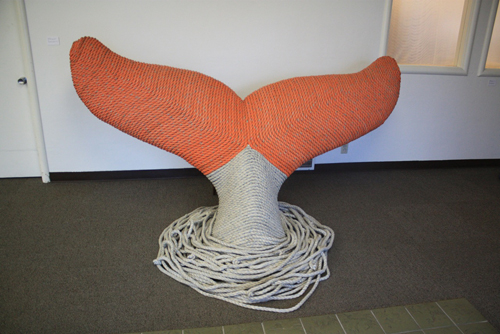 Ethan Estess
Ethan Estess Recology Sculpture Garden
Recology Sculpture Garden
